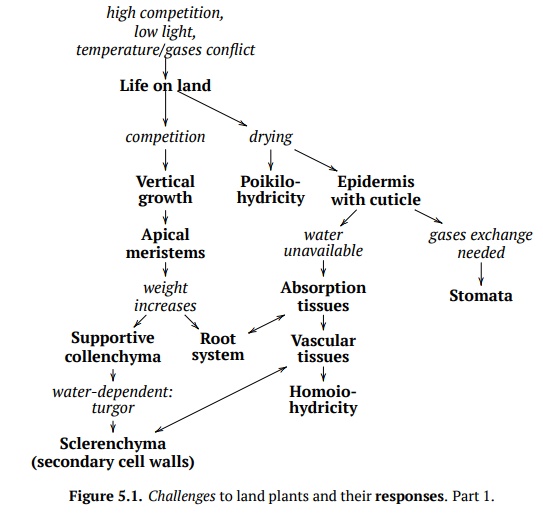Chapter: Introduction to Botany: Tissues and organs; How the Plant is built
Epidermis and Parenchyma - Tissues
Epidermis and Parenchyma
Why did plants go on
land? In order to escape competition with other plants for resources like the
sun and nutrients, but also to obtain much more sunlight that was otherwise
seriously reduced underwater. The move to land also helped plants escape
predators. Lastly, plants benefited from this change because they escaped from
the temperature-gases conflict:
warmer temperatures are good for organisms but significantly decrease the
amount of gases diluted in water.
Although this action
solved several problems, it also raised new issues that needed to be dealt
with. The most important was the risk of drying out. To com-bat this, plants
developed their first tissue: epidermis covered with a cuticle which served a purpose similar
to a plastic bag. But since they need to exchange gases, they developed stomata which served as a regulated
pore system. The remaining cells became second tissue: parenchyma (or ground tissue).

Another response (Fig.
5.1) for drying was a development of poikilohydricity (see below), the
ability to hibernate in (almost) dried condition. As hibernation is generally
dangerous since it requires “system restart”, that evolutionary route did not
become the main.Tissue is a union of
cells which have common origin, function and similar mor-phology. Tissues
belong to organs: organ is a union
of different tissues which have common function(s) and origin. Plants have simple
and complex tissues. The simple tissues
are composed of the same type of cells; complex
tissues are composed of more than one type of cell, these are unique to
plants.

Parenchyma (Fig.5.2)are spherical, elongated cells
with a thin primary cellwall. It is a main component of young plant organs. The
basic functions of pa-renchyma are photosynthesis
and storage. Parenchyma cells are widespread in plant body. They fill the
leaf, frequent in stem cortex and pith and is a compo-nent of complex vascular
tissues (see below). Contrary to parenchyma (which is a simple tissue), epidermis is a complex tissue composed
of epidermal and stomata cells. Its main functions are transpiration, gas exchange and defense. As it seen here, plants
acquired tissues in a way radically different from animals: while plants
regulate gas and water exchange in response to terrestrial environ-ment,
animals actively hunt for food (using kinoblast tissues) and then digest it
(with pagocytoblast tissue).
Related Topics